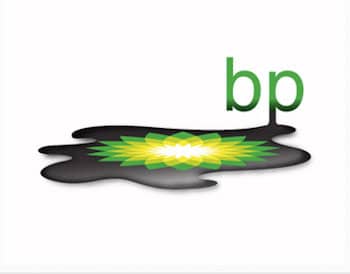More than one million tourists have flocked to the South for Mardi Gras, and hundreds of thousands of those revelers have settled in for a few days along the Gulf Coast. Those who decided to enjoy the festivities along the Gulf of Mexico might be in for something they didn’t expect: oil tar mats.
On Thursday of last week, workers on Pensacola Beach, Florida spotted and brought to shore a 1,200 pound oil tar mat, which officials say accounted for about 90% of the total size of the mat. While the bulk of the mat was a mixture of sand and other debris, scientists ran tests and were quickly able to determine that the oil in the mat was a perfect match for the oil released into the Gulf of Mexico during the 2010 Deepwater Horizon oil disaster, as the Pensacola News Journal explains:
The weathered oil from the tar mat was confirmed to be MC-252 oil from the 2010 Deepwater Horizon oil spill. Although the waters of the Gulf of Mexico were once scoured regularly for residual oil from the spill, physical searches were phased out as the number of sightings began to dwindle.
In the summer of 2013, BP pulled their cleanup crews from the Gulf Coast, assuring residents and tourists alike that the oil spill was all cleaned up. A few months later, the U.S. Coast Guard made similar claims to the public.
Furthermore, the public was assured as early as May 2010 — just one month after the oil leak began — that the majority of the oil would simply “dissolve” into the Gulf of Mexico. This latest tar mat is undeniable evidence that oil from BP’s disaster still remains in the Gulf.
The public was grossly misled about what it actually means for oil to “dissolve.” It may not be visible to the eye, but dissolved oil remains in the water – just as sugar “dissolves” in coffee; the chemicals are still there, just not in the concentration or consistency that they were before.
Proof of this dissolution is evident in the marine life abnormalities that are creeping up in the Gulf of Mexico, even in areas in South Florida that were unaffected by the spill.
Gizmodo posted a list of some of the major deformities that were discovered during an Al Jazeera investigation, all of which are attributable to BP’s oil:
Shrimp with tumors on their heads
Shrimp with defects on their gills and “shells missing around their gills and head”
Shrimp without eyes
Shrimp with babies still attached to them
Eyeless fish
Fish without eye-sockets
Fish without covers on their gills
Fish with large pink masses hanging off their eyes and gills
Crates of blue crabs, all of which were lacking at least one claw
Crabs with holes in their shells
Crabs with shells that have no spikes or claws or misshapen claws
Crabs that are dying from within
That’s just what’s happening to marine life. The workers, and sometimes residents, along the Gulf Coast who were inhaling the toxic mix of oil and Corexit for months have been reporting what is only described as “mystery respiratory illnesses.”
The irony of the timing is that Louisiana, Alabama and Florida have been spending some of the $57 million tourism promotion fund from BP to help attract visitors to the South during the Mardi Gras celebrations. I guess this latest tar mat is proof that millions of dollars can’t hide the truth.
Subscribe to our newsletter
Stay up to date with DeSmog news and alerts







